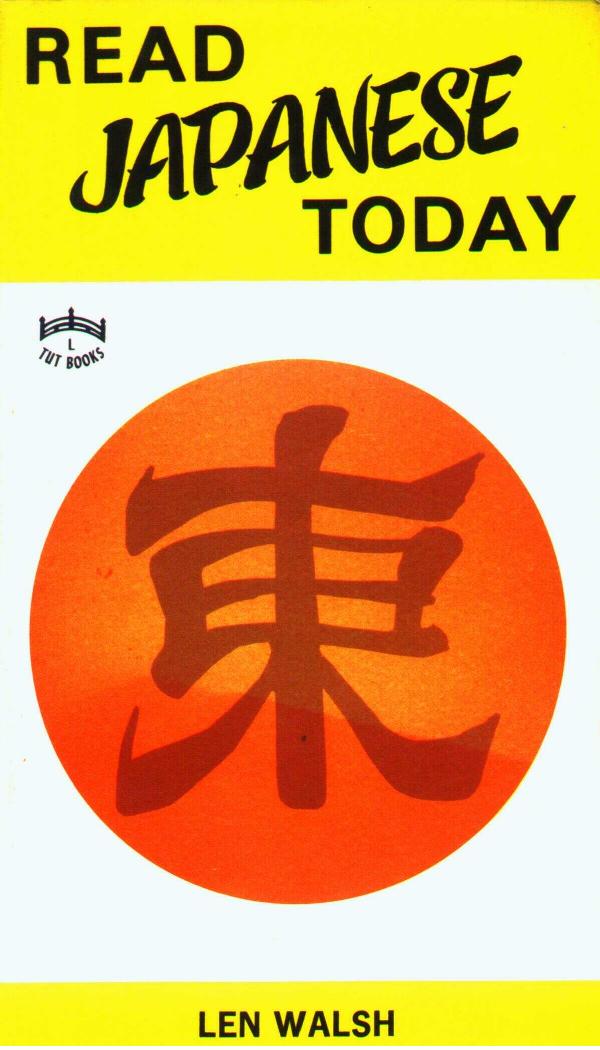Read Japanese Today by Len Walsh

Author:Len Walsh
Language: eng
Format: epub, pdf
ISBN: 978-4-8053-0981-0
Publisher: Tuttle Publishing
♦ SECTION 7 ♦
The Chinese drew a pictograph of a man with a big mouth to symbolize the meaning “elder brother.” They simplified the pictograph and drew the final form 兄, meaning elder brother or big brother. Used as a word by itself it is pronounced ANI. Used in compound words it is pronounced KEI or KYŌ.
The Chinese added horns to the element for elder brother 兄 to make him a real “big brother” . Then they combined this element with the element for a stalk of grain to symbolize the grain you pay to big brother in taxes. They wrote the final kanji form as 税, meaning taxes. Used either as a word by itself or in compound words it is pronounced ZEI. 税関 ZEIKAN, tax-barrier, means a customs house. 国 税 KOKUZEI, country-tax, means national taxes.
The same big brother with horns was combined with the element for say 言 to form a composite kanji 説 meaning an opinion or a theory as a noun, and meaning to preach or to explain as a verb. 説 is pronounced TOKU by itself and SETSU or ZEI in compound words. 説明 SETSUMEI, explain-clear, means explanation. A 説明書 SETSUMEISHO, explain-clear-writing, is an instruction manual. A 小説 SHŌSETSU, small-explain, is a novel. A 学説 GAKUSETSU, learn-theory, is a theory.
The Chinese took the element for elder brother 兄 and doubled it to make two elder brothers 兄兄. Then added stand 立立 to each to pit them one against the other to form the composite kanji 競 meaning to compete. Used as a word by itself 競 is pronounced SERU. In compound words it is pronounced KYŌ or KEI. 競争 KYŌSŌ, compete-struggle, means competition.
They added the pictograph of a terraced hillside to the elements of two elder brothers 兄兄 talking together under a canopy appraising the condition of the hillside they fear may be sliding down. They first drew the pictograph . They wrote the kanji , and there it stayed for several thousand years until they simplified it again, to 険. The old form is still occasionally seen. Either form means risky, steep, or dangerous. Used as a word by itself, 険 is pronounced KEWASHII. In compound words it is pronounced KEN.
To symbolize the idea of maintaining something in its original condition and protecting it to let it grow and prosper, the Chinese drew a pictograph of a baby, still in swaddling clothes, strapped to a wooden board carried on the back of a person 人 who protects the baby. The pictograph was first drawn , then simplified to , and finally to 保. It means preserve, maintain, or protect. Used as a word by itself, it is pronounced TAMOTSU. Used in compound words it is pronounced HO. 保険 HOKEN, protect-risk, means insurance. 保 険証 HOKENSHŌ, protect-risk-proof, means insurance card. 保証人 HOSHŌNIN, protect-proof-person, means a guarantor. 保証書 HOSHŌSHO, protect-proof-writing, means a product-warranty card.
The Chinese drew a pictograph of a cliff with a person who had fallen off it lying twisted on the ground below .
Download
This site does not store any files on its server. We only index and link to content provided by other sites. Please contact the content providers to delete copyright contents if any and email us, we'll remove relevant links or contents immediately.
Housekeeping by Marilynne Robinson(4347)
Papillon (English) by Henri Charrière(4197)
The Poetry of Pablo Neruda by Pablo Neruda(4040)
World without end by Ken Follett(3428)
TCP IP by Todd Lammle(3134)
Fluent Forever: How to Learn Any Language Fast and Never Forget It by Gabriel Wyner(3029)
The Rape Of Nanking by Iris Chang(2774)
How Proust Can Change Your Life by Alain De Botton(2742)
The Alchemist by Paulo Coelho(2644)
The Partner by John Grisham(2347)
Two lives by Helen Naylor(2270)
Hitler by Ian Kershaw(2153)
Yerma by Federico García Lorca(2016)
Sophie's World by Jostein Gaarder(1968)
Smilla's Sense of Snow by Peter Hoeg(1907)
Merriam-Webster's Pocket Dictionary by Merriam-Webster(1882)
Twilight of Idols and Anti-Christ by Friedrich Nietzsche(1850)
Il cavaliere inesistente by Italo Calvino(1826)
Deep Writing by Eric Maisel(1784)
